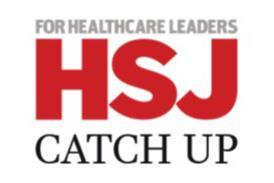There is much confusion and lack of understanding among patients and organisations about patient rights and whether they are actually being upheld
What meaning does a “patient right” have if patients don’t know about it or understand it, and there is no way to check whether they are achieving it?
This was the question raised by National Voices’ recent study of one of the clearest rights in the NHS constitution − the right to receive “drugs and treatments that have been recommended by the National Institute for Health and Care Excellence for use in the NHS, if your doctor says they are clinically appropriate”.
‘Commissioners have a duty to ensure that services are provided in a way that promotes the NHS Constitution’
With the help of Patient View, we carried out a comprehensive survey of patient groups and organisations in England to see what experiences they would report.
They were enthusiastic to respond; 665 groups started the questionnaire. But then half of them dropped out at some point, and the answers they had registered indicate why: “I have no idea what a NICE approved therapy is,” was not an unusual comment.
Lack of understanding
There was little understanding of a distinction between “recommended by NICE” − which refers specifically to therapies that have been through a health technology appraisal − and the vast range of other NICE “guidance”. “Only offered hysterectomy by the gynaecologist contrary to NICE guidelines,” said one comment. Another respondent said: “Awareness of NICE’s recommended diagnostic pathways is poor.”
It seemed many groups had been motivated to respond precisely by the lack of approved treatments for their members: “Many children’s therapies have not been approved by NICE”; “No approved treatments, just a mishmash of confusion”; “Very few rarer cancer patients have access to NICE approved therapies because not many drugs are NICE approved.”
Little reliability
The respondents collectively said they had knowledge of at least 4,928 people recently affected by lack of access to this right, but the confusion is such that little reliability can be placed on that figure.
Notably, even among the groups who had advocated or campaigned for this right, few had made use of the NHS constitution to press their case.
So if patients have difficulty reporting on access, what of system reported data?
For the past few years the Health and Social Care Information Centre has worked with the pharmaceutical industry to try to produce figures on the use of “recommended” therapies.
Heavily hedged with caution and caveats, these “experimental” statistics are based on “observed use” compiled from prescribing and sales data, and compared to “predicted” use. But since there is no baseline data on how many people might need or qualify for the treatments, “predicted use” is based on a series of estimates and assumptions.
Unknown rights
In short, we simply do not know how many people receive the recommended therapies, or how many are being denied their right.
In our report, The Teeth in the NHS Constitution, we suggest the problem of lack of patient awareness and an absence of monitoring data may equally apply to other patient rights.
Those that relate to access to services within maximum waiting times are the exception. Many people are aware of their rights here, and there is elaborate system reported data.
But others, such as the right of access to medical records, the right to share in decisions about care and treatment, or the right to be kept informed about the progress of a complaint are not widely known and understood, or well monitored.
Challenge for commissioners
This creates a challenge for NHS England and clinical commissioners. It is now their duty to promote awareness of the constitution. That’s a vague task and one which may not seem a priority compared to managing massive system challenges.
Yet without patient awareness, there will be no demand side pressure to achieve the rights enshrined in it.
Commissioners also have a duty to ensure that services are provided in a way that promotes the constitution; but without adequate data, they will have no way to monitor improvement or identify barriers to patients achieving their rights.
‘We do not want to arrive at the next review of the NHS Constitution still not knowing whether patient rights have any meaning’
In his report last year reviewing the NHS constitution, Andrew Lansley said: “Public awareness of the NHS constitution is relatively low and patients are not yet using the constitution as a means of exercising their rights.”
He also concluded: “What matters most to patients and staff is that the rights and pledges set out in the NHS constitution are delivered. It is therefore important that a clear evidence base for examining this is established.”
A year has gone by with little action. It is time for a change of gear. Evidence sets do exist for some of the rights, through patient reports in the national surveys; while for others, it would be possible to find innovative ways to encourage systematic patient reports.
We do not want to arrive at the next review, in two years, still not knowing whether patient rights have any meaning.
Don Redding is director of policy at National Voices



























2 Readers' comments